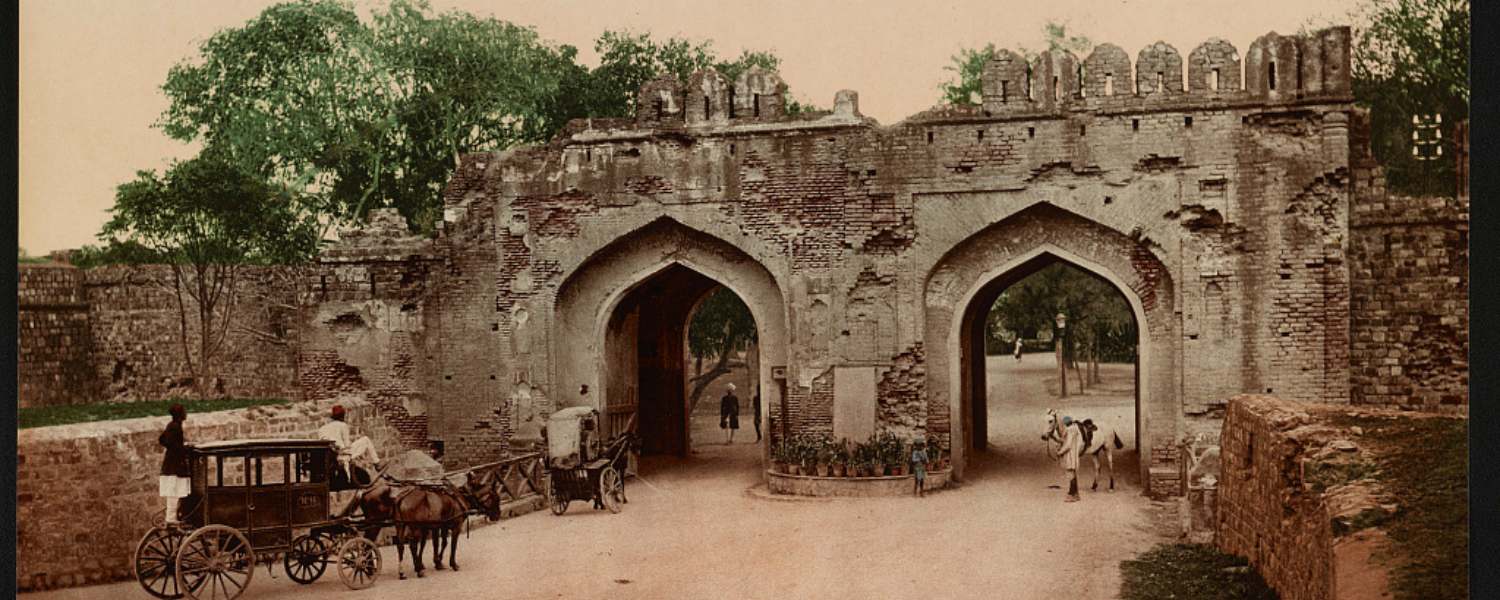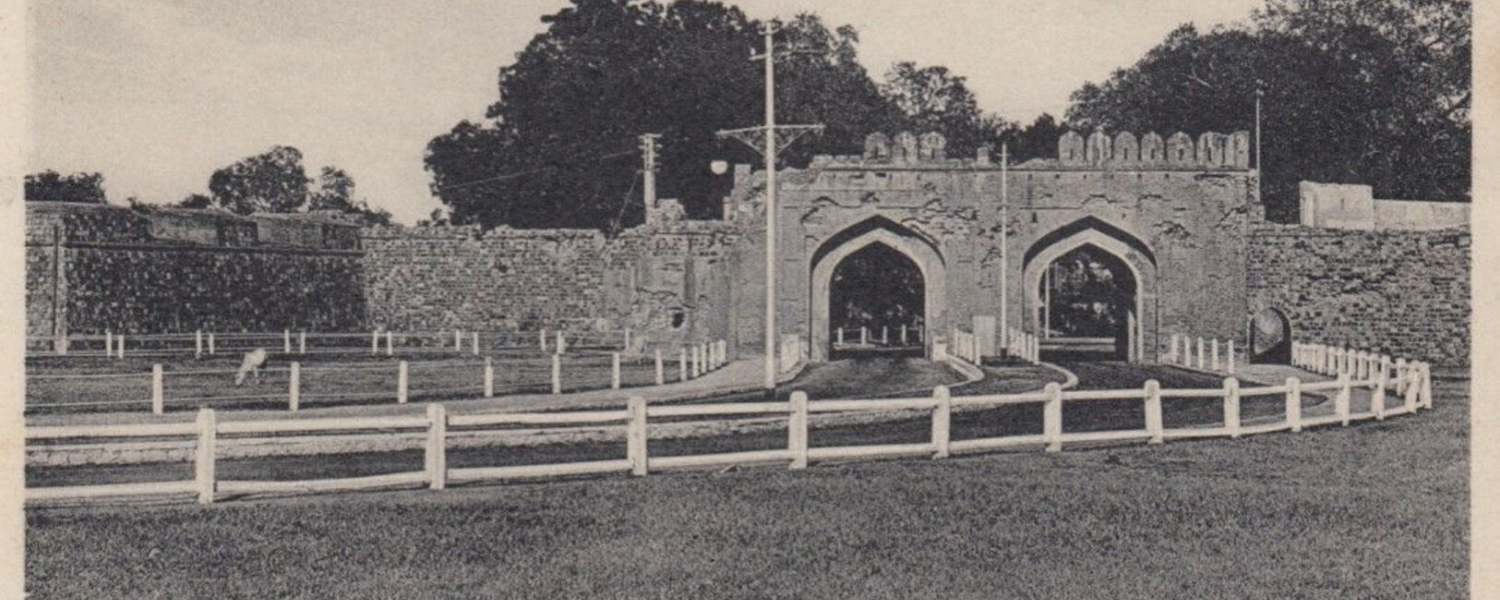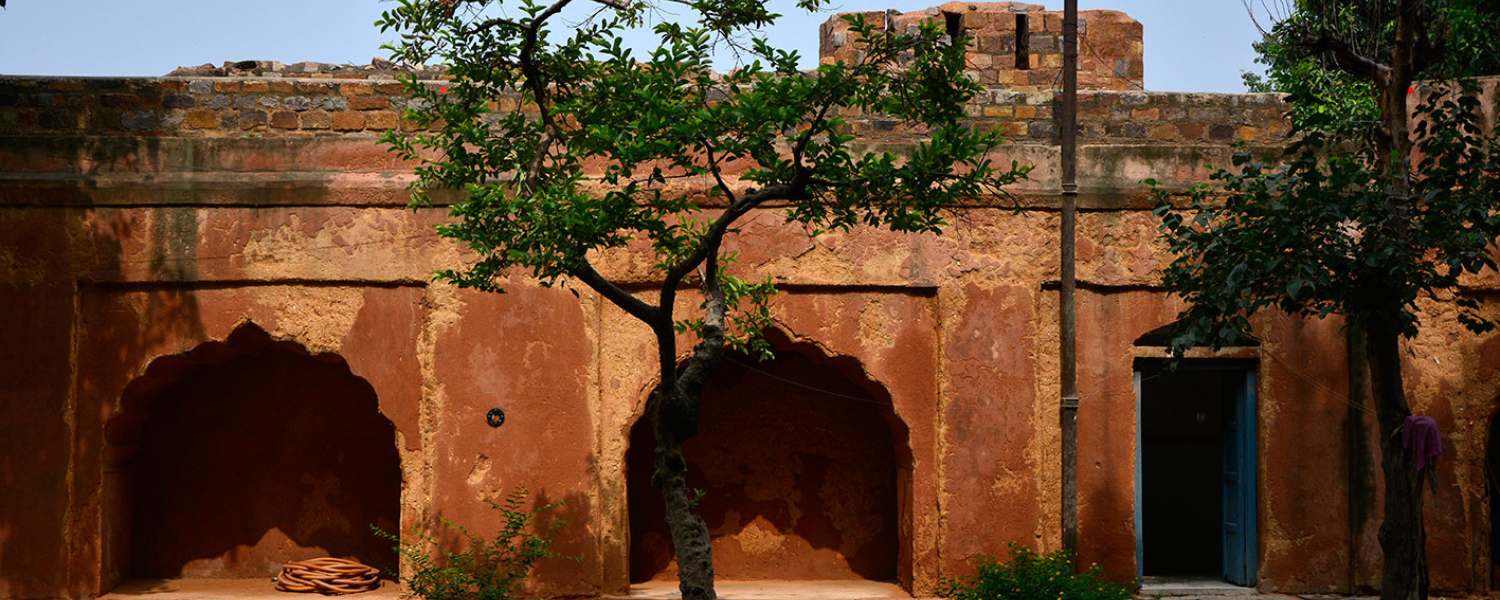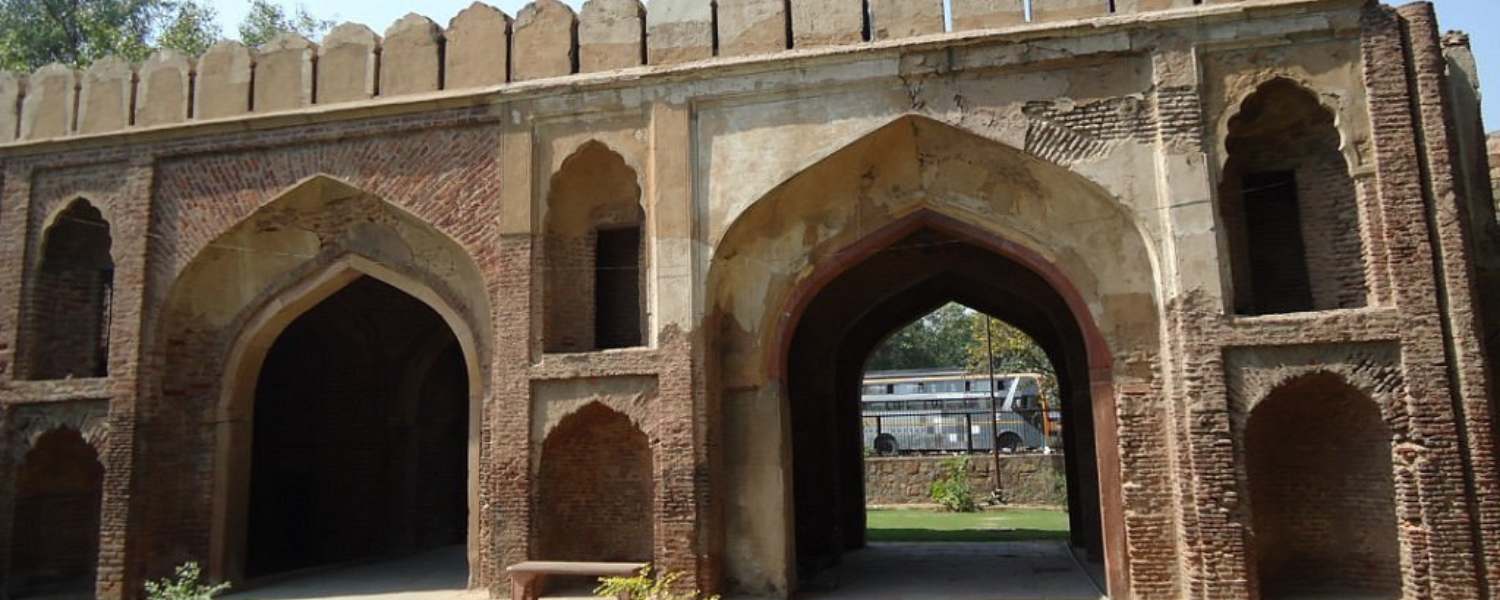Nestled within the heart of Delhi, amidst the bustling chaos of traffic and the cacophony of daily life, stands a monument that serves as a silent witness to centuries of history—the iconic Kashmiri Gate.
As we embark on a journey to unravel the historical tapestry that enshrouds this architectural gem, we delve into the annals of time, tracing the footsteps of conquerors, witnessing the ebb and flow of empires, and exploring the profound impact this gate has had on the narrative of Delhi.
Kashmiri Gate is a regal sentinel that has stood steadfast since its inception in 1638. Also, part of the Mughal Emperor Shah Jahan is more than a mere entry point to the walled city of Shahjahanabad.
It is a testament to the grandeur and strategic significance that defined the Mughal capital.
Named after the road leading to the northern realms, particularly the picturesque valleys of Kashmir, the gate encapsulates the architectural finesse and historical richness that characterize Mughal constructions.
The architectural splendors of Kashmiri Gate, from its floral motifs to calligraphic inscriptions, continue to captivate visitors, offering a glimpse into the luxury of Mughal craftsmanship.
It has become more than a historical relic; it is a living entity that breathes life into the city, reminding its residents of the cultural richness of every brick and archway.
Historical Significance of Kashmiri Gate in Delhi

The historical significance of the Kashmiri Gate was amplified during one of the darkest chapters in Delhi’s history—the Indian Rebellion of 1857.
This architectural marvel became the epicenter of a fierce struggle during the Siege of Delhi, as Indian rebels stood defiant against British colonial forces.
The gate, witness to intense conflict and sacrifice, bore the brunt of artillery fire, leaving scars that stand testament to the brave resistance that unfolded within its shadows.
The Siege of Delhi marked a turning point for Kashmiri Gate, transforming it from a symbol of imperial authority to an emblem of the indomitable spirit of those who fought for the sovereignty of their land.
Today, the bullet marks etched into the gate’s façade tell a poignant story of resilience, rebellion, and the price paid for pursuing freedom.
As we explore Kashmiri Gate, let us peel back the layers of time, uncovering the stories hidden within its weathered stones.
With its timeless elegance, the gate invites all who pass through to witness history and become a part of it.
Join us as we step back in time, unraveling the majestic saga behind Kashmiri Gate in Delhi, where each archway whispers tales of a bygone era, and every step taken is a stride through the corridors of a city’s enduring legacy.
1. The Origins of Kashmiri Gate

To comprehend the significance of Kashmiri Gate, one must delve into the pages of Delhi’s past.
Named after the road that led travelers to the northern regions, particularly Kashmir, it stood as a testament to the grandeur and strategic importance of the Mughal Empire.
With its imposing red sandstone structure and intricate carvings, the Kashmiri Gate was not merely a gateway but a symbol of power.
This threshold welcomed visitors and guarded the city against potential invaders.
2. The Siege of Delhi: A Turning Point
One of the most poignant chapters etched into the walls of Kashmiri Gate is the tumultuous period of the Indian Rebellion of 1857.
The gate became a focal point during the Siege of Delhi, a pivotal event in the uprising against British colonial rule.
As the rebels sought to break the chains of oppression, Kashmiri Gate became a symbol of resistance.
The British forces, facing staunch opposition, breached the gate after intense fighting.
The aftermath of the siege was marked by the scars of battle, with the gate bearing witness to the sacrifices made by those who fought for India’s independence.
Today, the bullet marks on the gate stand as silent reminders of the valiant struggle that unfolded at its feet.
You can also explore 90 Places to Visit in Delhi here.
3. Transformation Through Time: From Mughal Glory to Modern Intersection
As Delhi metamorphosed with time, the once formidable Kashmiri Gate evolved from a symbol of imperial grandeur to a busy intersection connecting the historical and modern facets of the city.
Though weathered by time, the gate retains its architectural allure, inviting locals and tourists to step back in time and marvel at the craftsmanship that has withstood the test of centuries.
Surrounded by bustling markets, vibrant neighborhoods, and the hum of daily life, Kashmiri Gate remains a living testament to the juxtaposition of history and modernity.
The architectural intricacies of the gate coexist harmoniously with the surrounding urban landscape, creating a unique blend of the old and the new that defines Delhi’s rich cultural mosaic.
4. Exploring the Architectural Splendors
The architectural marvels of Kashmiri Gate extend beyond its historical significance. Intricate carvings, ornate embellishments, and the sheer scale of the gate reflect the Mughal penchant for grandeur.
The imposing structure is adorned with floral motifs, calligraphy, and geometric patterns, showcasing the artistic finesse that defined Mughal architecture.
Visitors traverse through the gate and are transported back in time, imagining the grand processions, royal entourages, and the vibrant life that once flowed through its archways.
The preservation of such historical landmarks is essential for their architectural brilliance and the stories they encapsulate—the tales of triumphs, struggles, and the resilience of a city that has weathered the sands of time.
5. Modern-Day Significance: A Gateway to Heritage

In the 21st century, Kashmiri Gate continues to serve as a gateway, not just physically but as a passage to Delhi’s rich heritage.
The area surrounding the gate is a hub of cultural diversity, with markets, educational institutions, and historical landmarks converging to create a vibrant tapestry of contemporary Delhi life.
The gate is not merely an archaic relic but a living entity that connects the present to the past.
Its preservation and integration into the city’s modern infrastructure showcase Delhi’s commitment to honoring its history while forging ahead into the future.
Kashmiri Gate stands as a reminder that, amid rapid urbanization, the roots of a city are deeply embedded in its historical foundations.
5. Preservation Efforts: Ensuring a Legacy
The preservation of Kashmiri Gate has been an ongoing endeavor, with conservationists, historians, and local authorities working hand in hand to ensure its structural integrity and historical significance endure for generations to come.
Efforts have been made to maintain the gate’s original charm while adapting it to the needs of a modern city.
The surrounding area has been developed to enhance the overall experience for visitors, with informational plaques, guided tours, and curated exhibits providing insights into the gate’s history.
Such initiatives are crucial in fostering a sense of pride and awareness among the residents of Delhi and visitors alike, reminding them of the cultural treasure that Kashmiri Gate represents.
You can also explore the Best Historical Places In Delhi here.
6. Conclusion: Echoes of Time in Every Arch

In concluding our journey through the historical layers of Kashmiri Gate, it becomes evident that this architectural masterpiece is more than just a physical structure—it is a living testament to Delhi’s resilience, diversity, and enduring spirit.
As we walk through its archways, we step into the heart of the city and into the corridors of time, where each stone bears witness to the stories of conquerors, rebels, and the common people who have called Delhi home.
Kashmiri Gate is not frozen in the past; it pulsates with life, bridging the gap between epochs and inviting all who pass through to become a part of its living history.
It stands as a reminder that, in a city as dynamic and ever-changing as Delhi, the echoes of the past resonate in every arch, every carving, and every brick.
So, the next time you find yourself standing at the feet of Kashmiri Gate, take a moment to listen—the whispers of history are woven into its very fabric, inviting you to step back in time and become a part of the rich legacy that defines this iconic gateway.
In the heart of Delhi, where the cacophony of contemporary life melds with echoes of a bygone era, Kashmiri Gate stands as a silent sentinel, a living testament to the city’s rich tapestry of history.
As we conclude our journey through the annals of time, unraveling the intricate stories woven into the very fabric of this monumental gateway, it becomes evident that Kashmiri Gate is more than a relic; it is a time machine that beckons visitors to step back into the grandeur of Delhi’s past.
a) Preserving Heritage in Every Stone

The preservation of Kashmiri Gate is not merely an architectural endeavor; it is a commitment to safeguarding the collective memory of Delhi’s inhabitants.
Every stone of Kashmiri Gate holds within it the weight of centuries, a testament to the craftsmanship of artisans who left an indelible mark on Delhi’s landscape.
Through meticulous restoration and conservation efforts, Kashmiri Gate remains a living legacy, inviting locals and tourists alike to traverse its arches and immerse themselves in the captivating narratives etched into its weathered surfaces.
With its bullet scars and timeless elegance, the gate transcends its physicality, becoming a portal through which the past seamlessly intertwines with the present.
b) Whispers of Rebellion and Resilience
The scars of conflict, visible in the form of bullet-riddled masonry, are not symbols of defeat but badges of honor, marking the resilience of those who dared to challenge the yoke of colonial rule.
As we stand in the shadow of Kashmiri Gate, the echoes of rebellion resound, reminding us that the spirit of resistance continues to course through the veins of Delhi.
The gate, once a witness to the tumultuous events of the past, has transformed into a beacon of remembrance.
It calls upon us to honor the sacrifices made by those who fought bravely, urging us to appreciate the freedoms we enjoy today and preserve the historical landmarks that witness our shared heritage.
c) Kashmiri Gate: A Living Heritage
As the city around it pulsates with modern energy, Kashmiri Gate remains a serene bastion of history.
It seamlessly integrates into the urban fabric, offering a poignant contrast between the hustle of contemporary life and the quiet dignity of a structure that has stood for centuries.
The gate’s arches, adorned with intricate carvings, are more than mere architectural elements; they are portals that transport us to a time when Mughal emperors strolled through the same passageways.
In conclusion, Kashmiri Gate is not frozen in the past; it lives and breathes with every footstep that traverses its stones.
It invites us to be custodians of our shared history, urging us to pass the stories etched into its walls to future generations.
As we step away from the regal arches, let us carry with us the echoes of Kashmiri Gate, a living heritage that binds Delhi’s past, present, and future in an enduring embrace.










